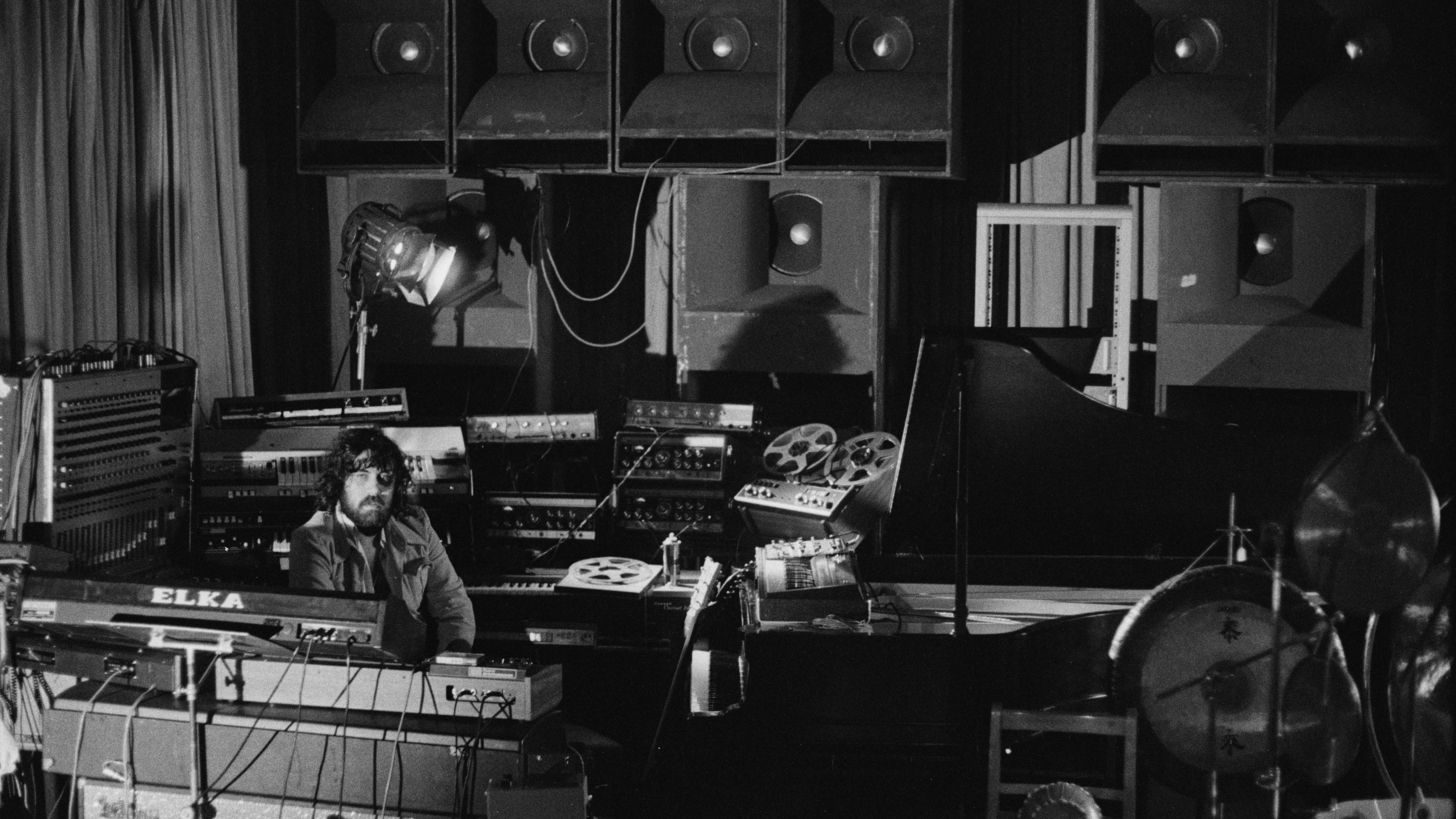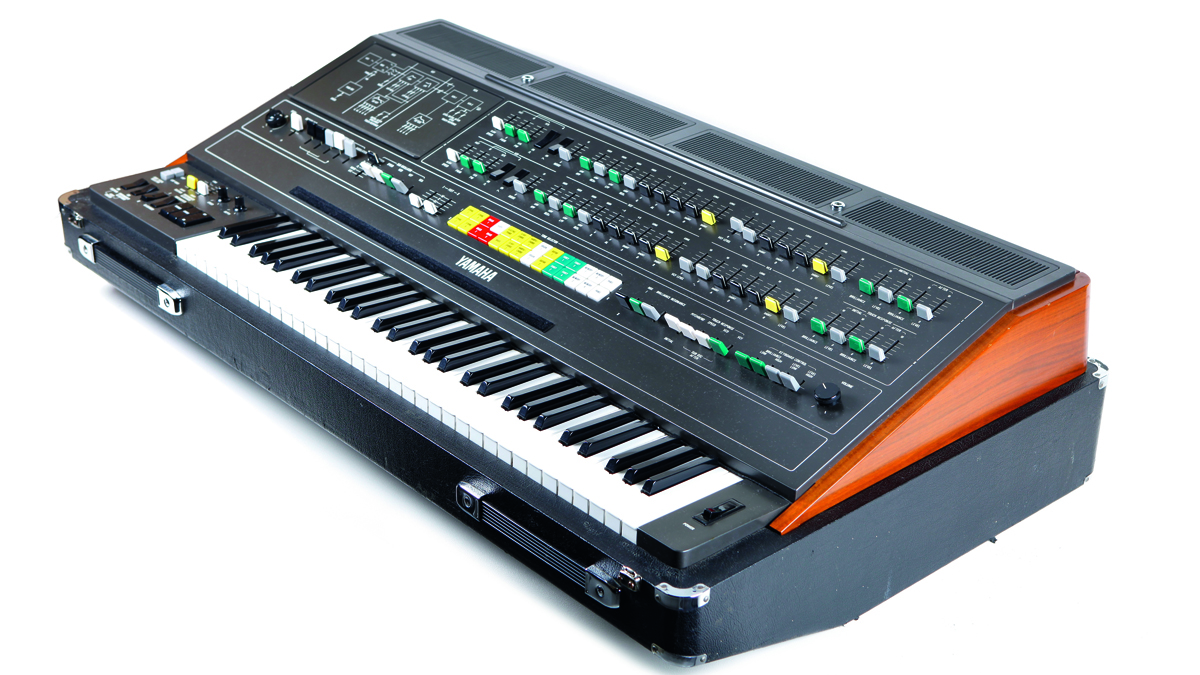Vangelis, 1943-2022: a synth and recording titan
Nemo Studios, the CS-80 and composing by gut

It was with great sadness that we heard of the death of legendary electronic musician and composer, Evángelos Odysséas Papathanassiou, better known to us all as Vangelis.
He lacked any kind of formal musical education, and largely composed using gut instinct
His influence extends far and wide, from fans and musicians, to the scoring giants of Hollywood, thanks to his unconventional style of working. Widespread recognition did not come quickly for Vangelis; the earlier part of his career started in the mid-'60s, embracing a mixture of solo and film work, working within his native Greece.
In 1968, following a political coup, he decided to move to London, but was refused entry, forcing him to settle in Paris, where he remained and worked for the next six years.
It was at this time that he began his association with prog rock, forming the band Aphrodite’s Child, with Demis Roussos, gaining a degree of both chart and commercial success throughout Europe.
Further solo albums followed, as did an audition for the band Yes, who needed a keyboard player to replace Rick Wakeman. Vangelis was offered the gig, but declined due to issues with his work visa and a reluctance to travel.
An eventual move to London in 1974 led to the setting up of his now legendary Nemo studios the following year. Vangelis described this location as a ‘laboratory’, which in turn led to the securing of a deal with RCA, although the transition to Nemo Studios was far from quick and easy.
Vangelis installed a host of custom recording equipment, which included a 24 track tape machine, with three portable transport remotes
The premises was previously used as a commercial photographic studio, and required a fair degree of restructuring and building, before it was suitable for the purposes of a studio, even one that was more of a laboratory!
Want all the hottest music and gear news, reviews, deals, features and more, direct to your inbox? Sign up here.
Studio convention was observed, up to a point, with the building of a control room and the live room, joined together by a window which could be removed. Vangelis installed a host of custom recording equipment, which included a 24-track tape machine, with three portable transport remotes.
These were accompanied by an API mixing desk, which facilitated Vangelis’ hybrid scoring technique, moving seamlessly between acoustic instruments and his collection of synthesizers.
A series of solo albums ensued - Albedo 0.39, Spiral, Beaubourg and China - all produced at Nemo. His production style began to gather interest from electronic musicians, particularly his choice of instrumentation, which was centred around the use of certain synthesizers and keyboards.

If we had to place one synthesizer at the door of Vangelis, it would undoubtedly be the Yamaha CS-80. A monster of a synth, weighing in at a staggering 82Kg, the all-analogue machine was spotted by Vangelis at a London Music Fair, in 1977.
This was a true performance synthesizer, polyphonic, and with features such as velocity sensitivity and aftertouch.
Even though the CS-80 had not been released in the UK at this stage, there was already a six month waiting list for delivery.

Despite this, he managed to loan a machine for a couple of weeks, allowing time to decide whether he should make the purchase.
The borrowed machine ended up on the album Spiral, leading to an eventual order, but nothing about this order was conventional, just like Vangelis.
To avoid the waiting list, he ordered his CS-80 directly from Japan, with land and sea based carriage providing the means for delivery. Once it arrived, it needed immediate alteration to the power and voltage requirements, before becoming a mainstay of his studio.
No greater CS-80 endorsement is required than the opening fanfare from his breakthrough score, for the theme from the feature film Chariots of Fire. A 7-inch single of the theme charted in the UK, and Vangelis suddenly became a household name. The release also marked something of a turning point in film scoring; an electronic score playing totally against the historical narrative.
This brave musical endeavour earned Vangelis an Academy Award, as well as establishing him as composer du jour. No surprise, then, that one of Vangelis’ next projects was to provide the score for the Ridley Scott feature, Blade Runner.
His dark and sparse scoring was the perfect backdrop for the dystopian picture, earning yet more praise, not least of all for the use of yet more cutting-edge technology.
Blade Runner featured his beloved CS-80, but a new digital kid arrived on the block, in the shape of a sampler called the Emulator. Bizarrely, Vangelis had hoped to use the Emulator as a replacement for his LinnDrum machine, but complained about the speed with which the Emulator reacted to his percussive playing. Consequently, the Emulator was repurposed for other sounds, which became heavily scattered throughout the score, alongside the CS-80 and live percussion.
Vangelis’ compositional and creative style was in itself incredibly interesting. He lacked any kind of formal musical education, and largely composed using gut instinct. He would often watch a visual and just play in real-time, evoking any sense of emotion within the moment.
Because he would record directly to tape, and later computer, it meant that the process was relatively fast, when compared to more traditional compositional techniques. But the biggest calling card came with his instrumental pallete, which blended his now famous synthetic sounds with live percussion. He would also make extensive use of his grand piano, permanently miked within his studio.
Despite his undoubted triumph as a film composer, the somewhat reclusive Vangelis enjoyed considerable chart and critical success alongside friend and singer, Jon Anderson.
With the release of several albums came classic singles; I Hear you Now and I’ll Find My Way Home were both chart hits, with the highly recognisable Vangelis instrumentation providing the perfect backdrop to the beautiful vocals, supplied by Jon Anderson.
Vangelis not only leaves a legacy of wonderful electronic music and scores, but also patch inspiration for many synthesizers.
When Roland originally released the JP-8000 synthesizer, the opening Performance patch was called Chariots, and who couldn’t resist playing that opening fifth, from the film in question?

